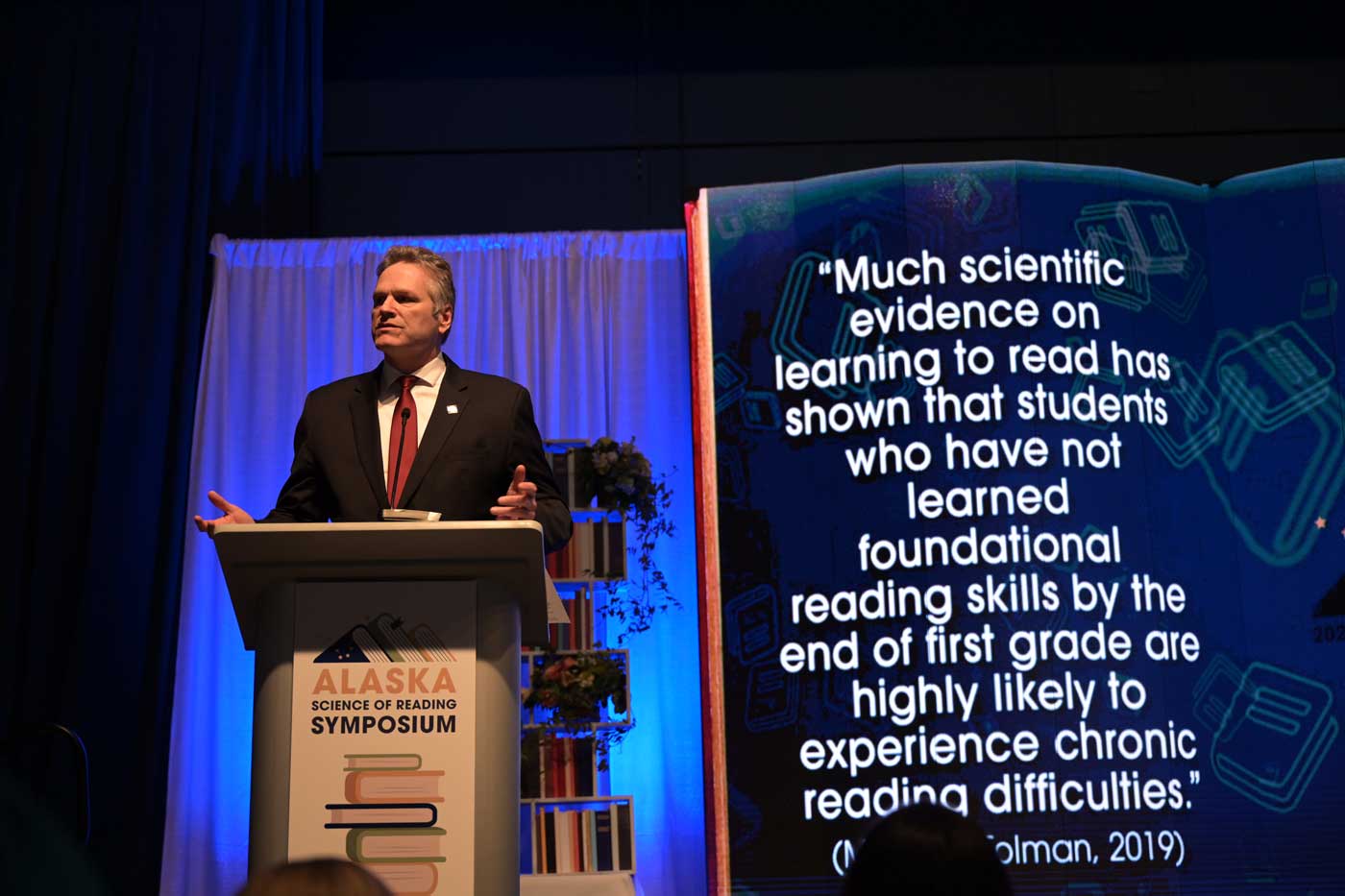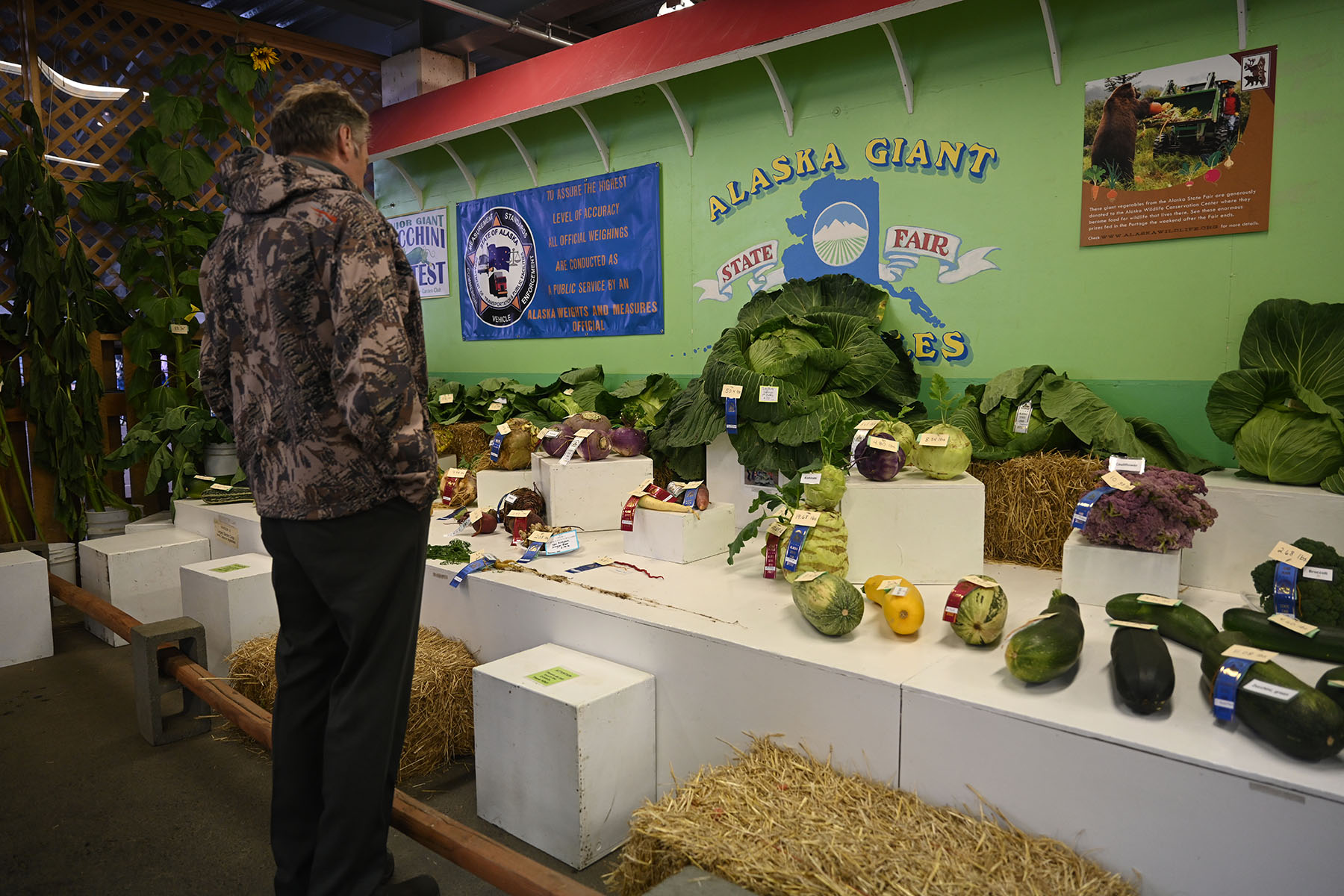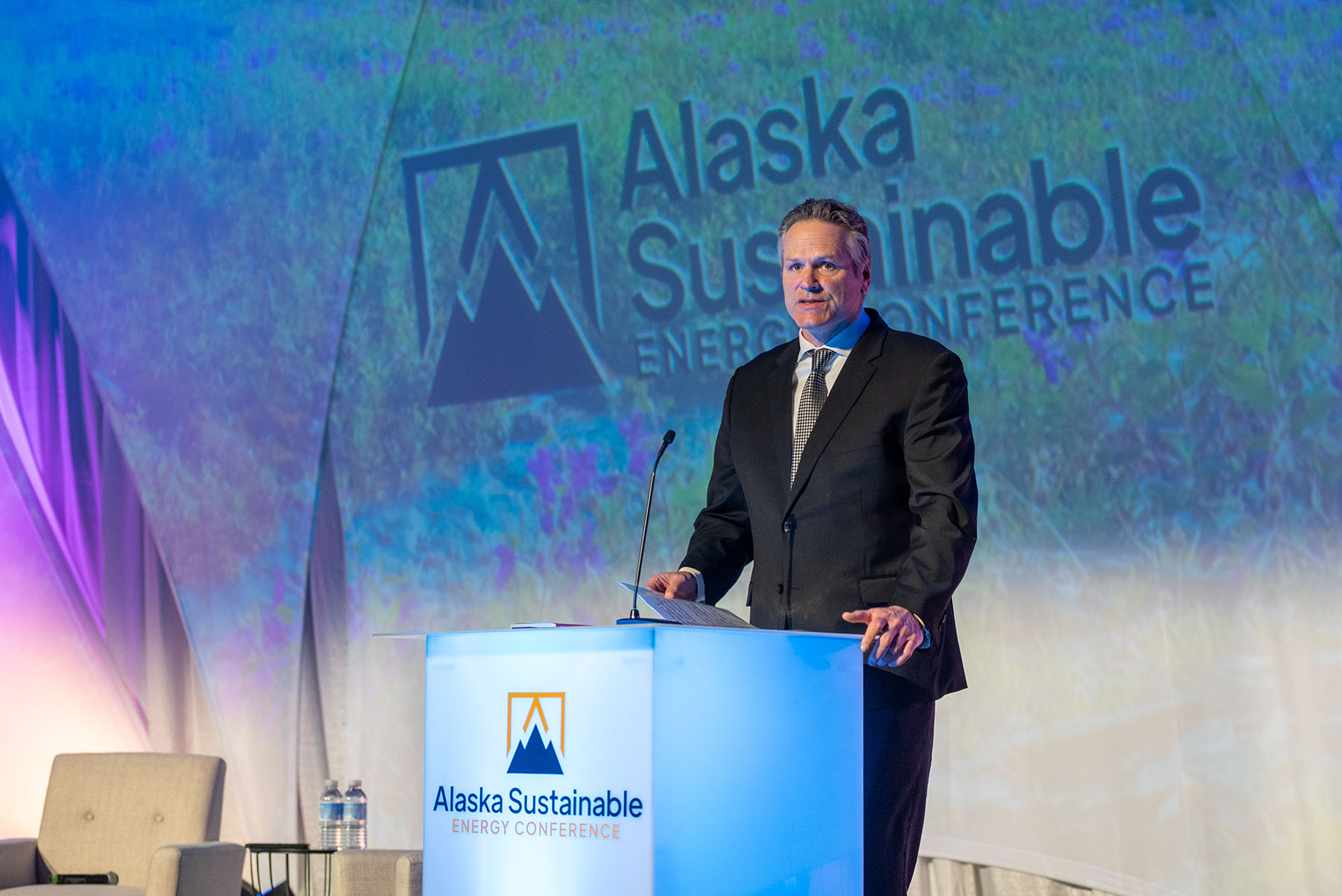Strong Families
Strong Alaska
Governor Dunleavy’s vision is to make Alaska the best and most affordable place to live, work, and raise a family.
“When people look for the best educational system for their family, they’ll say Alaska. When people look for affordable housing, they’ll say Alaska. When people look for economic opportunity, they’ll say Alaska. When people look for the best quality of life, they’ll say Alaska.”
GOVERNOR DUNLEAVY, January 23, 2023
Strong Families
Strong Alaska
Governor Dunleavy’s vision is to make Alaska the best and most affordable place to live, work, and raise a family.
“When people look for the best educational system for their family, they’ll say Alaska. When people look for affordable housing, they’ll say Alaska. When people look for economic opportunity, they’ll say Alaska. When people look for the best quality of life, they’ll say Alaska.”
GOVERNOR DUNLEAVY, January 23, 2023
“Affordable energy and housing are magnets for economic growth . . .”
GOVERNOR DUNLEAVY, January 29, 2024
HOUSING
The foundation for strong families begins with a home. Affordability is key, especially for young families, in securing housing; in Alaska we recognize the high cost of housing as a potential barrier and have taken action to increase access and affordability.
DID YOU KNOW?
- Alaska’s housing market has remained resilient. Factors such as a strong job market, low unemployment rate, and a variety of industries contribute to the stability of the housing market, making it a promising place for homebuyers.
- Living in Alaska means being surrounded by incredible adventure and breathtaking natural beauty.
ACTIONS
- Governor Dunleavy proposed $62.5 million in the FY25 budget to support Alaska Housing Finance Corporation’s (AHFC) annual housing programs, including the Last Frontier Housing Initiative, which provides grants targeted toward communities in need of hard-to-fill, critical state positions. AHFC’s Rural Professionals Housing program serving teachers, law enforcement officials, and others, has constructed more than 500 housing units in 80 rural communities since 2004. The enacted budget contains additional funds which were appropriated by the legislature to further support these efforts.
- Governor Dunleavy successfully introduced legislation to expand AHFC’s ability to provide financial assistance to new homeowners. This legislation will make a meaningful difference for homebuyers struggling to come up with a down payment. The projected out-of-pocket savings based on the average sales price of a home in Anchorage last year is nearly $10,000.

“Healthy families and a healthy economy go hand in hand, and improving access to child care is essential for both.”
GOVERNOR DUNLEAVY, April 6, 2023
CHILDCARE
Quality Child Care: Building Strong Families and a Thriving Economy. Providing working families with access to quality child care reinforces family stability and promotes economic growth. Increasing the availability and affordability of child care is a crucial step in advancing our economy.
DID YOU KNOW?
- Child care is more than care and education services for families and young children; it’s a cornerstone of economic growth and family stability. Early care and education in Alaska generates economic activity, prepares children for school and life, allows workforce participation, and improves Alaska’s standard of living.
- Alaska’s Child Care Assistance Program (CCAP) – also known as Parents Achieving Self-Sufficiency (PASS) – helps eligible working families pay for child care. This program subsidizes child care costs so parents can work or attend school.
- Alaska offers an Inclusive Child Care Program (Alaska IN!) to support children with special needs. If a family is receiving child care assistance and has a child with diagnosed special needs, the Alaska IN! program provides supplemental funding to the child care provider.
- To improve quality and keep child care programs running, Alaska’s Child Care Grant Program gives licensed providers monthly cash grants
ACTIONS
- Governor Dunleavy established a Task Force on Child Care in April of 2023.
- An initial report from the Child Care Task Force was submitted to the Governor in December 2023 with recommendations focusing on background checks, licensing, workforce, business partnerships and tribal authority. The Task Force’s final report (PDF) was delivered to the Governor in September 2024. In total, 56 recommendations were developed focusing on improving the affordability and accessibility, of quality child care statewide.
- A comprehensive study on the true cost of child care in Alaska was conducted in 2023–2024 to inform policy decisions and funding needs.
- To expedite background checks for child care workers, the state invested in digital fingerprinting equipment. This advancement will accelerate the hiring process for child care facilities, addressing workforce shortages more efficiently.
- Governor Dunleavy’s FY26 budget includes $6 million to implement expanded eligibility of the Child Care Assistance Program.
- The Alaska Child Care Information System (AKCCIS) has been launched, streamlining and modernizing the child care technology platform to better serve families, providers, and staff.
- Under Governor Dunleavy’s leadership, the Department of Health has revised regulations to tackle workforce challenges faced by Child Care Administrators by:
- Expanding educational pathways to meet eligibility requirements.
- Allowing administrators to delegate responsibilities to qualified staff during their absence.
- Eliminating the Child Care Associate requirement, which had posed a major obstacle for child care businesses.
- These updates aim to strengthen the workforce and support child care providers in meeting operational demands.

“With the right environment, our kids across the state can attain incredible performance.”
GOVERNOR DUNLEAVY, December 14, 2023
K-12 and Higher Education
Education is a fundamental responsibility of government, and we are committed to strategic investments that enhance student achievement and prepare graduates for successful post-secondary outcomes.
DID YOU KNOW?
- Alaska’s Charter Schools Lead the Nation: A 2024 Harvard study ranked Alaska’s public charter schools first in the nation, highlighting significant gains among historically underperforming students.
- Alaska Performance Scholarship (APS): This scholarship assists eligible high school seniors in covering costs associated with postsecondary education within Alaska, including tuition for vocational education training and college degree programs.
- Robust Correspondence School System: Alaska’s flexible and comprehensive correspondence programs expand access to high-quality education, particularly for students in rural and remote areas. These programs support parent-directed learning models and broaden educational choice across the state.
- University of Alaska System’s Unique Advantages: The University of Alaska System is a leader in Arctic research, workforce development, and hands-on learning, offering specialized programs in natural resource management, engineering, healthcare, and education to support Alaska’s unique economy and communities.
TARGETED INVESTMENTS AND STRONG POLICY
- The Governor’s proposed FY26 budget includes a total investment of $1.5 billion in K-12 Education, with $2.75 million allocated to Career and Technical Education, Teacher Apprenticeships, and Teacher Recruitment and Retention Initiatives.
- The Alaska Reads Act has led to significant improvements in K-3 reading proficiency during the 2024 school year, surpassing national averages. This landmark legislation is transforming early literacy education by implementing systematic, evidence-based instructional practices rooted in the Science of Reading, along with rigorous educational and professional teaching standards.
- In 2025, Governor Dunleavy introduced legislation (HB 76, SB 82) to enhance educational outcomes, key reforms include:
-
- Teacher Retention Incentives:Providing lump-sum payments ranging from $5,000 to $15,000 each year for three years to improve teacher retention and recruitment.
- Reading Proficiency Incentive Grants:Expanding incentive grants to districts for students achieving reading proficiency or demonstrating significant improvement from the current K-3 grades to grades K-6.
- Increased Funding for Correspondence and Career-Technical Education:Raising funding levels to support modernized learning resources and programs aligned with workforce demands.
- Open Enrollment and Streamlined Charter School Authorizations:Providing more options for families by allowing students to attend any public school in Alaska and expanding the process for creating new public charter schools.
- Cell Phone-Free Schools:Requiring school districts to adopt policies that prohibit mobile device use during instructional time, with certain exceptions.
- Governor Dunleavy also introduced legislation (HB 59, SB 66) establishing a five-year pilot program for demonstration state-tribal education compact (STEC) schools, allowing participating tribes and tribal organizations to operate public schools under negotiated compacts with the Department of Education and Early Development (DEED).
Governor Dunleavy speaks at the Science of Reading Symposium in April 2023.

“With vigilance and a relentless pursuit of justice, we’ll build an Alaska where we can all feel safe everywhere … and criminals can’t escape justice anywhere.”
GOVERNOR DUNLEAVY, July 29, 2024
PUBLIC SAFETY
Governor Dunleavy has made historic investments in the Department of Public Safety and continues to work to make our state a safe place for all Alaskans. Alaska’s state law enforcement is a dynamic force tailored to the state’s vast and rugged landscape.
DID YOU KNOW?
- From 2019 to 2023, Alaska saw a significant decrease in overall crime rates with a reduction of about 31%, During that same period, violent crime dropped by 15.9%.
- Alaska’s law enforcement is uniquely equipped for diverse challenges. The Alaska State Troopers and Wildlife Troopers cover everything from day-to-day policing to wilderness patrols. Specialized units like the Alaska Bureau of Investigation handle serious crimes and Village Public Safety Officers often serve as first responders across the vast landscapes of the Last Frontier.
ACTIONS
- In 2019, Governor Dunleavy championed and signed into law omnibus crime-fighting legislation to address the gaps in Alaska’s criminal statutes and codes by strengthening sentencing for many felonies, giving discretion back to judges and the Parole Board, and making improvements to the “catch and release” bail system.
- After eliminating the historic sexual assault kit testing backlog, the Department of Public Safety launched a sexual assault kit tracking system, enabling survivors to monitor the status of their kits and preventing future backlogs.
- In 2021, the Alaska State Troopers established a major crimes investigative unit in Western Alaska.
- As a result of Governor Dunleavy’s People First Initiative, the State of Alaska’s response to Missing and Murdered Indigenous Persons is among the most aggressive in the nation.
- In 2022, the Alaska State Troopers established a violent crime victim navigator program to assist and communicate with victims of violent crime to ensure that they are included in the investigation and understand their rights and in 2024, the Alaska Bureau of Investigation established a Child Sexual Abuse Investigative Unit in the Bethel region to respond to the extremely high rates of child sexual abuse that occur in this region.
- Governor Dunleavy signed one of the most comprehensive crime bills in decades, aimed at improving public safety in Alaska in July 2024. The legislation targets issues like fentanyl, child exploitation, and human trafficking, while enhancing protections for crime victims. It includes stricter penalties for drug-related deaths, updates the sex offender registry, and introduces new crimes, such as assaulting someone in a child’s presence.
- In FY24 and FY25, the State of Alaska filled a multi-million-dollar federal funding gap for Alaska’s domestic violence and sexual assault shelters ensuring that victims had access to safe housing and services after experiencing a traumatic crime.

“Alaska is blessed with abundant and clean lands and waters … and we can develop these resources to become food independent once again.”
GOVERNOR DUNLEAVY, January 29, 2024
Food Security
Alaska’s land and water resources are tremendous, lending to incredible opportunities in the agricultural sector. Opportunities to secure agricultural land in our state are greater than in other states. Growing our agricultural industry will build stronger, more sustainable, and healthier food systems in our state, enhancing the availability and affordability of quality food for Alaskans.
DID YOU KNOW?
- Alaska is renowned for its abundant seafood resources. The state’s pristine waters are home to world-class fisheries that supply high-quality salmon, halibut, crab, and more.
- Alaskan communities, particularly Alaska Native communities, have a long tradition of subsistence living. Hunting, fishing, and gathering wild foods are integral to their culture and provide a reliable source of sustenance.
- Alaska’s farmers are at the forefront of adopting innovative practices which enable the growth of fresh produce year-round despite the harsh climate.
ACTIONS
- Governor Dunleavy established the Alaska Food Security and Independence Task Force in February 2022. In March 2023, the Alaska Food Security and Independence Task Force delivered the final report to the Governor.
- Governor Dunleavy’s proposed 2024 legislation to expand hunting opportunities for individuals experiencing disabilities passed the State Legislature.
- In January 2025, Governor Dunleavy issued an executive order to establish the Alaska Department of Agriculture. The new department will focus on enhancing Alaska’s agricultural sector to increase economic activity and strengthen the state’s food security.
- The Department of Environmental Conservation is advancing a Food Freedom regulation package to support local food producers and expand Alaska’s cottage food industry. With public input gathered, the regulations are moving through the final review process in anticipation of being served up soon!
Governor Dunleavy visits the large vegetable exhibit at the Alaska State Fair in 2022.

“Alaska has the resources, creativity, and ability to achieve energy independence that will fuel a growing economy.”
GOVERNOR DUNLEAVY, April 2023
Houston Solar Farm and Fireweed (Photo by CleanCapital)
REDUCING THE COST OF ENERGY
Alaska’s vast energy resources position the state for an energy-rich future for its residents.
DID YOU KNOW?
- Alaska’s diverse landscape offers substantial renewable energy potential. The state receives about 30 percent of its electricity by harnessing hydropower and has significant opportunities for wind, solar, hydro, tidal, and geothermal energy development.
- The Alaska Energy Authority is advancing the Dixon Diversion project, which will increase the capacity of state-owned Bradley Lake hydro by 50 percent by 2030.
- The Trans-Alaska Pipeline System (TAPS) spans 800 miles and has transported more than 18 billion barrels of crude oil since 1977. While its peak throughput was 2.1 million barrels per day in the 1980s, it currently moves approximately 500,000 barrels daily, remaining a vital part of national energy infrastructure. New developments on the North Slope will add about 240,000 barrels per day within the next few years.
ACTIONS
- In 2022, Governor Dunleavy established the annual Alaska Sustainable Energy Conference. This conference brings together visionaries, researchers, and policymakers worldwide to explore technologies and policies that drive energy innovation.
- The FY25 enacted budget included over $10 million for renewable projects.
- Under Governor Dunleavy’s leadership, the Alaska Energy Authority spearheads efforts to enhance resiliency, reliability, and redundancy across the Railbelt through two major projects. The $342 million Dixon Diversion Project, a significant expansion of Bradley Lake — Alaska’s largest hydroelectric facility —and the $413 million initiative to build a 38-mile High-Voltage Direct Current Submarine Transmission Line across Cook Inlet to address the fragility of Alaska’s electrical system.
- The Alaska Liquified Natural Gas Project is the state’s top priority energy infrastructure project. It is designed to maximize the benefits of Alaska’s North Slope natural gas resources for residents, export to our allies, and power industries in manufacturing, data centers, and more.
- In 2022, Governor Dunleavy introduced energy legislation to promote energy independence, long-term cost reductions, and competitive markets in urban and rural Alaska.
- A key element is a firm commitment to transitioning to 30% sustainable power by 2030 and 80% by 2040. The administration worked with the National Renewable Energy Laboratory to demonstrate that the 80% target is highly achievable and will result in $426 million to $506 million in annual fuel savings by 2040.
- In 2023, the Governor introduced and signed SB48, establishing a framework for carbon offset and storage initiatives to position Alaska as a leader in responsible carbon management.
- Governor Dunleavy established the Energy Security Task Force in the spring of 2023. The final report, outlining strategies to enhance Alaska’s energy resilience, was delivered to the governor on December 1, 2023.
- In 2024, Governor Dunleavy introduced and signed three landmark energy bills to strengthen Alaska’s energy independence and economic future.
- HB50 – Established a framework for carbon capture, utilization, and storage (CCUS), positioning Alaska over its vast pore space for investment to project developers of all kinds.
- HB307 – Eliminated transmission wheeling rates along the Railbelt, exempted new power and battery systems from local taxation, and established an independent board for the Alaska Energy Authority. This bill represents the most significant Railbelt energy reform since Alaska’s statehood.
- HB273 – Created the Alaska Energy Independence Fund to support financing for renewable and sustainable energy projects across the state.
- Governor Dunleavy introduced and signed legislation in 2022 to allow the siting of micronuclear reactors in Alaska, putting the state at the forefront of energy innovation.
Governor Dunleavy speaks at the Alaska Sustainable Energy Conference – this annual event draws energy developers and investors to Alaska each year.

Alaska Family Survey
For more information on factors impacting family planning decisions in Alaska, check out the links below:
Family Survey – Topline Results
Alaska Family Survey (PDF)

